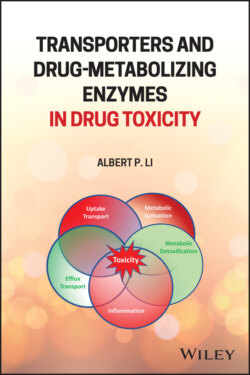Читать книгу Transporters and Drug-Metabolizing Enzymes in Drug Toxicity - Albert P. Li - Страница 57
3.3.3 Risk Factors
ОглавлениеThe toxicity of cerivastatin is a function of plasma drug concentration which is determined by hepatic uptake and metabolism. Environmental and genetic conditions leading to reduction of hepatic CYP2C8 and OATP transporter activities are likely to be risk factors for cerivastatin‐induced rhabdomyolysis. Co‐exposure to CYP2C8 inhibitor as a major key factor has already been demonstrated with the high incidence of rhabdomyolysis in patients coadministered gemfibrozil. Genome wide association evaluation of 185 rhabdomyolysis patients in a case control study has identified genetic variants of OATP1B1(SLCO1B1), a nonsynonymous coding variant rs4149056 variant, as a statistically significant risk factor for patients administered cerivastatin without gemfibrozil coadministration [61]. Transfection of the variant gene into an in vitro cell culture system shows reduced cerivastatin uptake when compared to wild type, strongly suggesting that patients with the variant OATP1B1 had a similar reduction in cerivastatin uptake. In the same study, no association of CYP2C8 variants with rhabdomyolysis was observed. The results appear to suggest that uptake transporter may be a more important risk factor for rhabdomyolysis for patients administered with cerivastatin alone.
